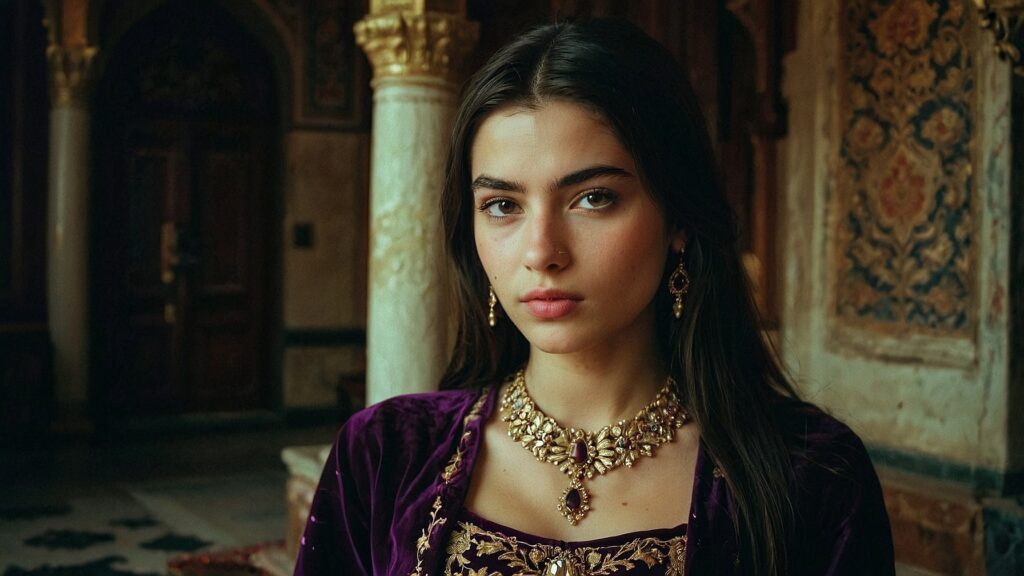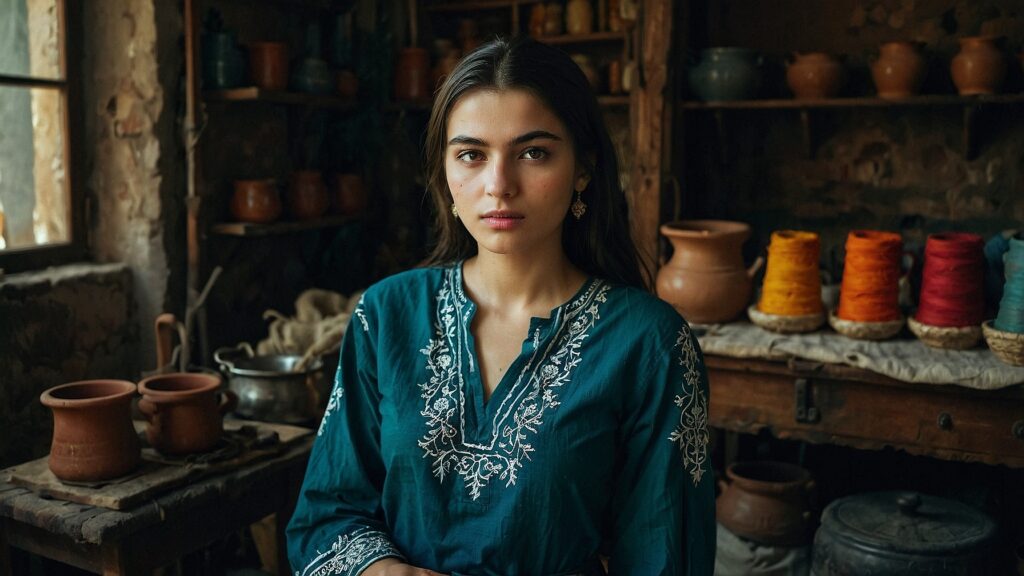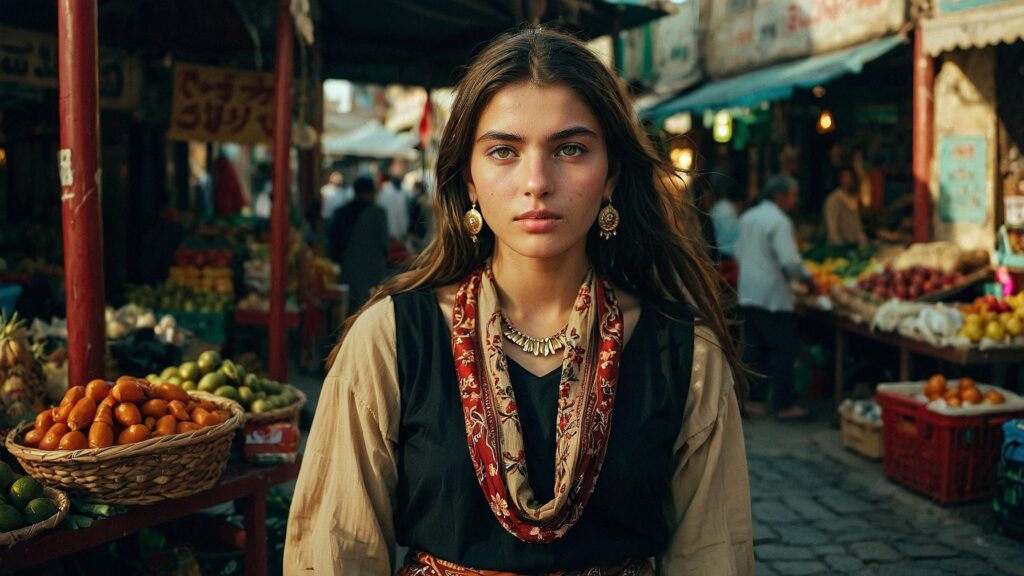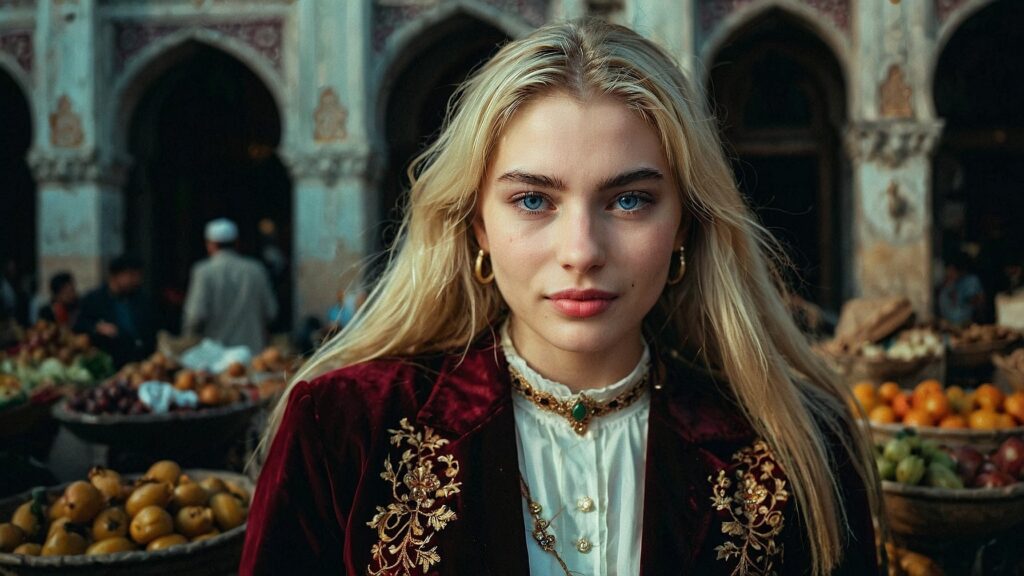Key Takeaways
- Ottoman fashion exemplified an era where rich, vibrant color patterns were woven into garments, reflecting social status, cultural exchange, and artisanal mastery.
- Dyes sourced from distant lands along trade routes influenced the wide palette seen in luxurious silks, embroidered velvets, and intricate brocades.
- Choosing and combining colors was not arbitrary; it followed deeply ingrained traditions, court regulations, and practical techniques that ensured garments maintained their radiance and prestige over time.

When you think of the Ottoman Empire, your mind often drifts toward images of grand palaces, bustling bazaars, and a unique blend of influences from Europe, Asia, and the Middle East. Among the most captivating elements of this rich cultural tapestry was the clothing: a world where color held incredible sway and fabrics were carefully curated to display wealth, taste, and sophistication. These garments weren’t just thrown together; they were painstakingly designed, dyed, and woven to produce ensembles that shimmered, gleamed, and demanded admiration.
From the 14th century onward, the Ottoman Empire’s weaving centers and workshops became famous for their advanced dyeing techniques, luxurious fabrics, and meticulous pattern-making. Before long, traders and travelers spread the word of Turkish silks, velvets, and brocades, stimulating a thirst for Ottoman color patterns throughout many corners of the known world. Beyond the royal courts, even the more common classes coveted these textiles, saving up and investing in at least one special garment that would serve as both personal pride and a family heirloom.
We’ll journey through the intricacies of choosing colors, pairing them, and maintaining their brilliance. We’ll explore the subtle differences in patterns, how climate affected color usage, and how these age-old techniques can still inspire modern wardrobes. Prepare to dive deep into the multifaceted world of Ottoman color traditions—techniques and insights that go far beyond any simple style guide.
Sumptuous Beginnings: Historical Roots of Ottoman Color Traditions

The Silk Road Influence
Long before the Ottoman Empire reached its zenith, the famed Silk Road had already introduced a world of pigments, dyes, and fabrics. The Ottomans embraced these resources, mixing knowledge gleaned from Persian, Arab, and Byzantine sources to establish their own color lexicon.
Court Patronage and Workshops
Supported by sultans, elite workshops in major cities like Istanbul and Bursa trained master dyers and weavers. They experimented with new hues, perfected old recipes, and set standards for quality that resonated well beyond the empire’s borders.
Early Color Regulations
Sumptuary laws sometimes dictated which shades could be worn by certain social groups. This ensured the upper classes could enjoy exclusive hues like deep crimson or shimmering gold, maintaining a clear visual hierarchy in public life.
Rich Fabrics: The Canvases for Color

Silks and Velvets
Silk was the ultimate luxury textile. When dyed with premium pigments, silk would glow under candlelight. Ottoman velvet, meanwhile, combined plush textures with vibrant dyes, making garments both sumptuous to the eye and comforting to the touch.
Brocades and Lampas Weaves
These intricate weaves incorporated metallic threads, often gold or silver. The interplay between shining threads and colored silk backgrounds created a dynamic look that changed with every movement, reflecting refined dye work and superb weaving skills.
Lightweight Cottons and Linens
Not every garment was a showpiece. Common folk and practical garments required more affordable fabrics. Cottons and linens were sometimes dyed in warm earth tones or lighter colors suited to daily wear—still reflecting quality but without the opulence of court attire.
Masterful Dyeing Techniques

Natural Dye Sources
Dyes were carefully extracted from plants, insects, and minerals. Madder root for reds, indigo for blues, saffron for yellow—each had its own preparation method. This reliance on nature meant that the selection of dyes often followed seasonal and regional availability.
Layered Dyeing for Depth
Sometimes multiple dye baths were used to achieve richer, more complex hues. By layering different dye solutions, artisans created dimensional colors that seemed to dance on the fabric’s surface, ensuring no two garments ever looked identical.
Color Fixation and Fastness
A brilliant color was useless if it faded too quickly. Skilled dyers understood the importance of mordants and proper finishing steps. Alum, iron, and other fixatives helped lock the pigment into the fabric, ensuring long-lasting brilliance even after repeated wear.
The Art of Pattern Making
Stylized Florals and Geometry
Ottoman textiles favored patterns ranging from delicate floral sprays to complex geometric interlaces. Colors were carefully chosen to complement these motifs: a bold floral might be set against a muted backdrop to highlight its fine details.
Symbolic Motifs
Beyond aesthetics, some patterns held symbolic value. Certain floral motifs were associated with prosperity or longevity. While we won’t delve into deep symbolism, understanding these favored motifs helps us appreciate how pattern and color worked hand-in-hand.
Balancing Color and Shape
Pattern designers had to consider how colors would flow across a garment’s silhouette. Lighter shades might appear near the neckline, while deeper hues formed borders at cuffs and hems. This strategic placement ensured patterns remained harmonious when worn.
Seasonal Hues and Climate Considerations
Brights for Summer
During sweltering months, lighter colors and airy fabrics reigned supreme. Pastels or softer shades reflected the sunlight, helping keep the wearer cool while still showcasing refined style.
Warm Tones for Cooler Seasons
As cooler weather approached, richer dyes like deep reds, burgundies, and forest greens came into play. These colors complemented heavier fabrics like wool and provided a comforting visual warmth.
Transitional Palettes
Between seasons, Ottomans cleverly blended palettes: perhaps pairing a summer-friendly light blue with the emerging autumnal browns. This approach eased transitions and made wardrobes flexible, stretching the lifespan of precious garments.
Regional Variations and Local Preferences

Anatolian Inspirations
Textiles from Anatolia reflected local tastes: earthy browns, warm reds, and subtle greens. They drew from local plants and dyes that were readily available, resulting in a characteristic, region-specific palette.
Balkan Echoes
Influences from the Balkans brought cooler tones and simpler patterns. Blue hues from woad or indigo-based dyes were more common here, and patterns often leaned toward understated elegance.
Levantine Flourishes
In regions closer to the Levant, brighter colors like saffron yellow and pomegranate red made frequent appearances, echoing the sun-baked landscapes and vibrant marketplaces of the eastern Mediterranean.
Status and Hierarchy in Color Choices
Reserved Hues for the Elite
Deep purples, rich crimsons, and cloth of gold were often signs of noble status. Wearing these colors without the proper rank might invite social scorn or even legal trouble.
Merchant Class Finesse
Wealthy merchants might wear intricate brocades in intermediate colors—maroons, dark blues, and rich greens—signifying their prosperity but not overstepping the royal privileges.
Commoner’s Practical Palette
Common folk often preferred colors that were practical and affordable. Natural browns, tans, and uncomplicated blues and greens fit their needs. Simple patterns and reliable dyes ensured durability over trend.
Accessories That Completed the Look
Headgear and Turbans
Turbans and caps were dyed to either complement or contrast the garments. A neutral robe could be given a lively twist with a vibrant headpiece, or a richly hued robe could be offset by a subtler turban.
Belts and Sashes
A belt or sash acted like a color bridge. If the robe was primarily crimson, the sash might feature gold and green accents. This tying piece brought coherence and enhanced visual harmony.
Footwear and Small Accents
Even shoes got the color treatment. Leather might be dyed in rich browns or reds, and embroidered slippers could pick up on tones from the main outfit. Small details like these reflected the holistic approach Ottomans took with color matching.
Ceremonial and Court Attire

Wedding Ensembles
For weddings and important ceremonies, the palette often grew even richer. Metallic threads, velvets, and intense dyes transformed ordinary cloth into something truly regal, making the event unforgettable.
Diplomatic Robes
When hosting foreign dignitaries, Ottoman elites wore garments that showcased the empire’s best craftsmanship. Bold contrasts, shimmering gold details, and saturated jewel tones sent a clear message of wealth and sophistication.
Festive Seasonal Outfits
Certain holidays and court gatherings called for specific color themes. Garments might lean toward lively greens and blues for spring festivals or adopt harvest-like shades of rust, auburn, and saffron for autumn celebrations.
Practical Techniques for Pairing Colors
Contrasts That Pop
Pairing complementary colors—like a deep indigo with a bright saffron—created visually arresting ensembles. Such pairings ensured the eye traveled across the garment, taking in its full complexity.
Tonal Layering
For those who preferred subtlety, using variations of a single hue in different fabrics added depth without overpowering. Light blues, medium blues, and dark blues layered together offered sophistication and cohesion.
Neutral Balancing
Neutrals like ivory, beige, and soft gray served as a foundation. Adding a pop of color on top of these bases let the main hue shine without creating visual chaos. This technique is as applicable today as it was centuries ago.
Maintenance and Preservation of Colors

Gentle Washing and Drying
Dyes were sensitive to harsh treatment. Garments were carefully washed with mild soaps, then dried in shade to prevent colors from fading under intense sun. This preservation ritual ensured fabrics remained vibrant over many years.
Proper Storage
Folding and storing garments in cedar chests or wrapping them in cloth protected them from moths and moisture. Spices or dried lavender might be included to keep garments fresh and maintain the quality of the color.
Periodic Re-Dyeing
If a cherished garment lost some color over time, artisans could renew it with fresh dye baths. This practice allowed beloved pieces to stay relevant across generations, maintaining their role as family heirlooms.
Modern Lessons from Ottoman Color Expertise
Inspiration for Today’s Wardrobes
Ottoman color mastery can inspire modern ensembles. Perhaps you combine a jewel-toned scarf with a neutral jacket, or select a pair of shoes that adds a clever contrast to your outfit. These historical lessons enrich contemporary style choices.
Sustainable Dyeing Practices
The reliance on natural dyes and careful color fixation offers a template for eco-conscious fashion. By looking to the past, we can discover more sustainable ways to color and preserve our modern textiles.
Global Fusion of Styles
Ottoman fashion drew from many cultures and influences. Today’s world encourages mixing international aesthetics. Incorporating hints of Ottoman-inspired color combinations can make your style more diverse, interesting, and truly global.
Tips for Incorporating Ottoman-Inspired Color Schemes

Start with a Signature Hue
Pick one “hero” color, like a rich burgundy or a deep indigo, and build your outfit around it. Ottoman ensembles often began with a key hue that set the tone for the entire look.
Add Accessories to Bridge Colors
Use a scarf, belt, or hat to tie different colors together. This approach, reminiscent of Ottoman sashes and turbans, ensures your chosen palette feels intentional and cohesive.
Experiment with Patterns Moderately
Don’t be afraid of patterns, but keep them in check. Pair a bold, Ottoman-inspired patterned piece with solid-colored garments. This method allows the pattern to stand out without overwhelming the eye.
Common Misconceptions About Ottoman Colors
Not Always Over-the-Top
While Ottoman attire could be lavish, not everyone wore showy outfits daily. Practicality still played a role, and many garments featured modest patterns and colors that fit everyday life.
Dyes Were Not Easy to Obtain
Some assume that bright colors were commonplace. In reality, achieving such intensity required great skill, expensive dyes, and time-consuming processes. Those colors were precious commodities, not trivial decorations.
Patterns Had Real Purpose
Patterns were not random. They served to flatter the body’s shape, highlight social position, or mark special occasions. Understanding this helps us appreciate the thought and effort behind each garment’s design.
Beyond the Court: Influence on Neighboring Cultures

Venetian Traders and European Demand
As Venetian merchants carried these textiles westward, Europeans admired the luminous colors and tried to replicate them. This cross-cultural interest influenced Renaissance textiles and beyond.
Persian and Mughal Parallels
Ottoman artisans learned from and influenced neighboring empires. The interplay of similar dyeing and weaving traditions created a shared visual language in luxury garments across major powers.
Long-Lasting Legacies
Even as the Ottoman Empire receded, its fashion legacy persisted. Textiles in museums, collectors’ items, and historical references continue to shape how we perceive elegance and richness in clothing.
Conclusion
The world of Ottoman Empire fashion shimmered with an intensity that still fascinates us. Clothes were more than coverings—they were a statement of culture, artistry, and global exchange. The empire’s dyers, weavers, and designers approached their craft with thoughtful intention, blending colors, patterns, and techniques to create garments that could stun the eye and capture the imagination.
Their lessons remain relevant today. Whether you’re seeking to enrich your personal wardrobe with historical flair or simply appreciate the subtlety of well-matched colors, the Ottoman tradition offers an endless wellspring of inspiration. From selecting natural dyes to balancing complementary hues, from weaving a story through patterned textiles to cherishing clothes as family treasures—their approach shows us that clothing can transcend mere fashion. It can become an enduring piece of cultural expression.
Final Table
| Element | Ottoman Approach | Modern Application |
|---|---|---|
| Dye Sources | Natural (madder, indigo, saffron) | Explore eco-friendly dyes, reduce chemical usage |
| Fabric Choice | Luxurious silks, velvets, brocades | Invest in quality fabrics with lasting value |
| Color Technique | Layered dyeing, mordants for color fastness | Experiment with layering colors or tie-dye methods |
| Pattern Placement | Thoughtful motif distribution | Balance patterns with solids for visual harmony |
| Accessories | Turbans, sashes as color bridges | Use scarves, belts, hats to unify your outfit |
| Seasonal Adaptation | Lighter tones in summer, richer in winter | Adjust hue intensity with climate and occasion |
| Social Significance | Specific colors signified rank or status | Incorporate meaningful hues in personal brand |
| Maintenance | Gentle wash, proper storage, periodic re-dye | Care for garments to maintain longevity and vibrancy |
FAQ
Q: Can I incorporate Ottoman-inspired color schemes without wearing traditional clothing?
A: Absolutely. Focus on combining jewel-toned pieces or richly patterned scarves with neutral garments. Even a contemporary dress or suit can be enriched by an accessory that reflects Ottoman color sensibilities.
Q: How can I find natural dyes similar to those used in Ottoman fabrics?
A: Many craft stores and online vendors sell natural dye kits. Look for high-quality, reputable sources that emphasize sustainable practices. Experimenting at home with items like madder root or walnut husks can be both fun and informative.
Q: Do I need to follow strict historical accuracy to capture the Ottoman vibe?
A: Not at all. While studying historical techniques is enlightening, you can adapt these ideas to fit your style. Combine a modern jacket with a patterned textile reminiscent of Ottoman motifs, or just use their color pairing principles to guide your selections.

Q: Is it difficult to maintain vibrant colors in my own wardrobe today?
A: With quality fabrics and proper care—gentle washing, avoiding harsh detergents, and storing garments away from direct sunlight—you can preserve bright colors. You might not need periodic re-dyeing like in Ottoman times, but thoughtful maintenance still keeps colors crisp.
Q: Can these color principles apply to home décor as well?
A: Certainly. Consider using Ottoman-inspired palettes for curtains, cushions, or rugs. Just as these textiles brought warmth and luxury to clothing, they can transform a living space into something more inviting and elegant.

Anna West, the visionary behind Clothes Color Guide, is our go-to for all things fashion. Merging the finest of runway trends with everyday style, she demystifies the world of color and pattern. While clothing is her mainstay, Anna also shares insights on interior design, pet care, and relationship advice. Dive into her articles and emerge with a vibrant perspective on style and life.
Reviewed By: Joanna Perez and Marcella Raskin
Edited By: Lenny Terra
Fact Checked By: Sam Goldman
Photos Taken or Curated By: Matthew Mansour
